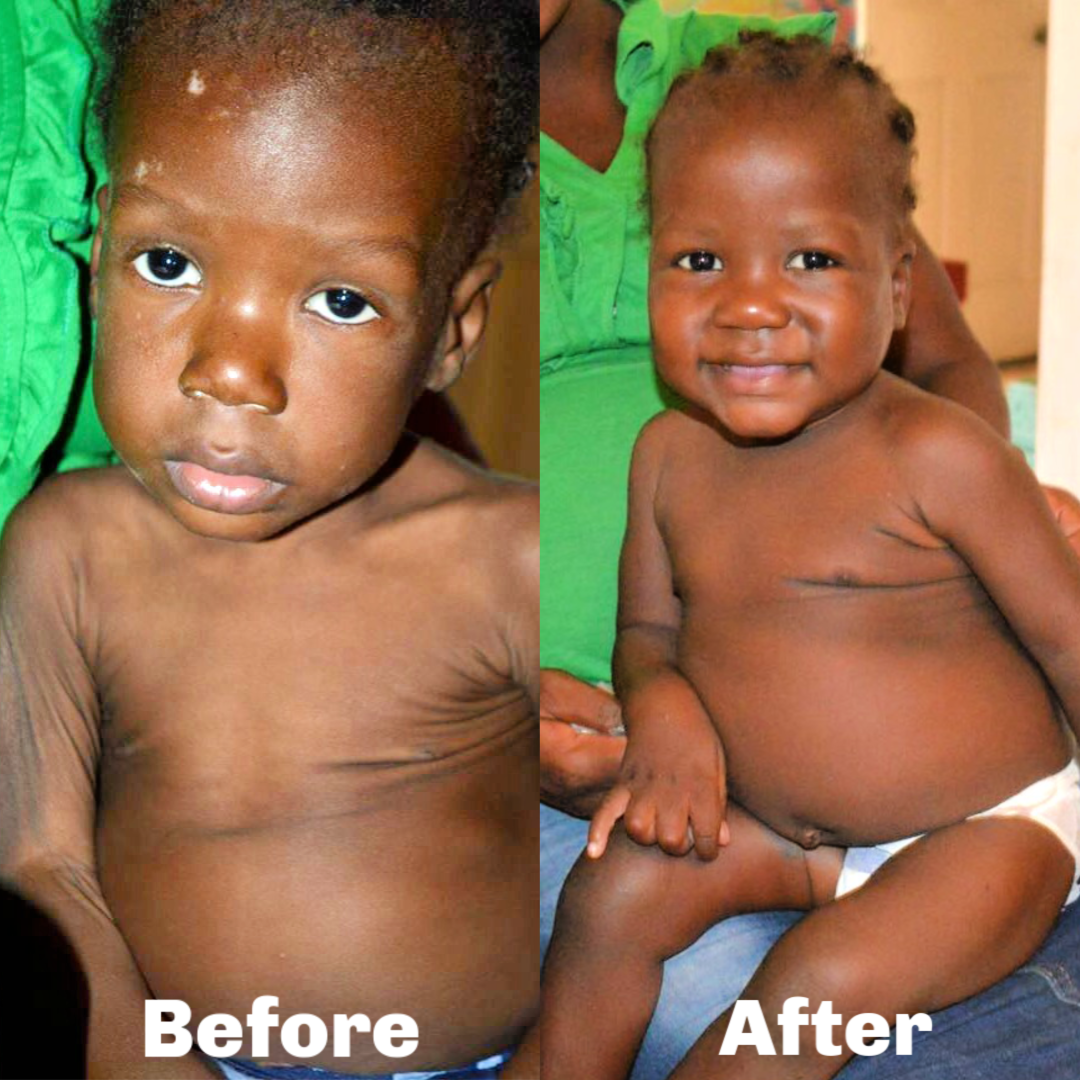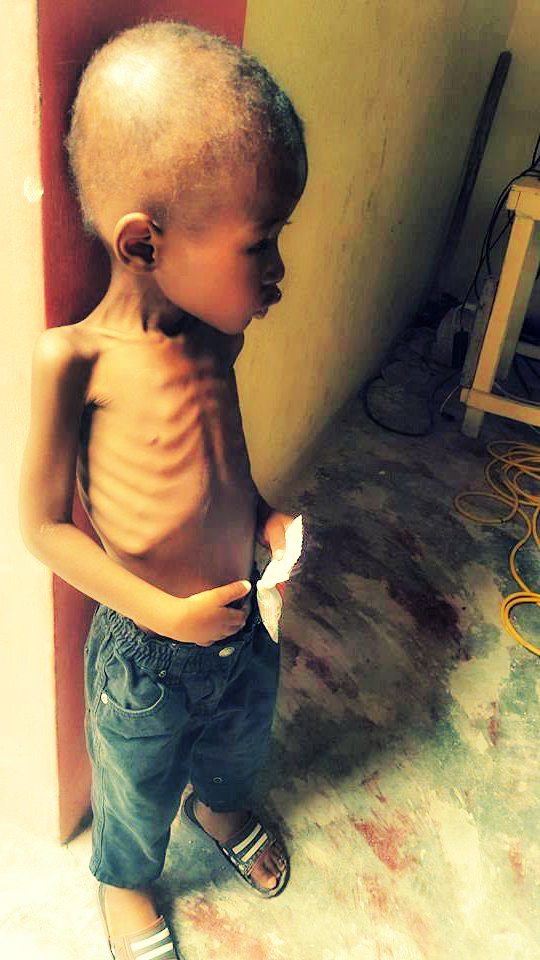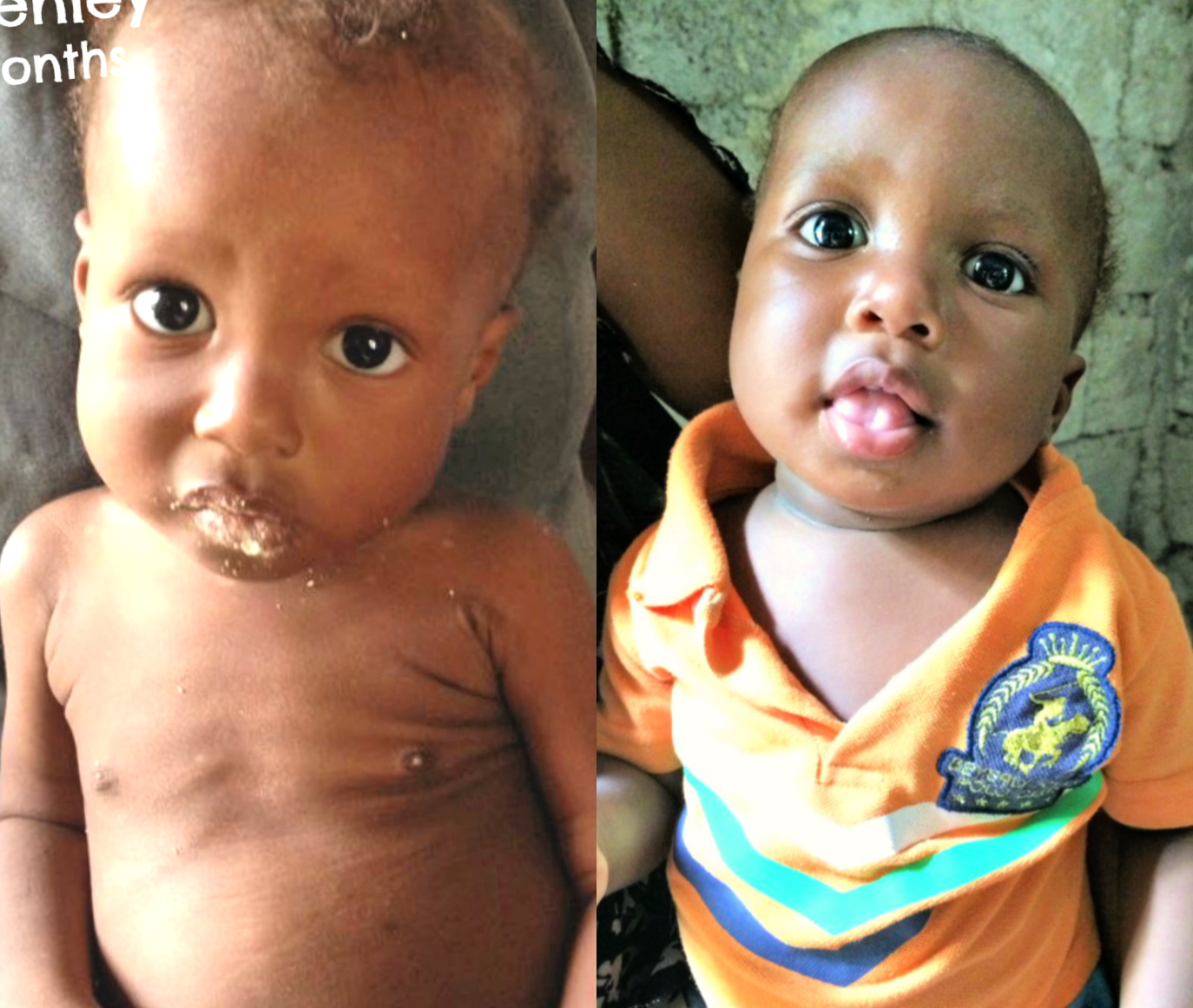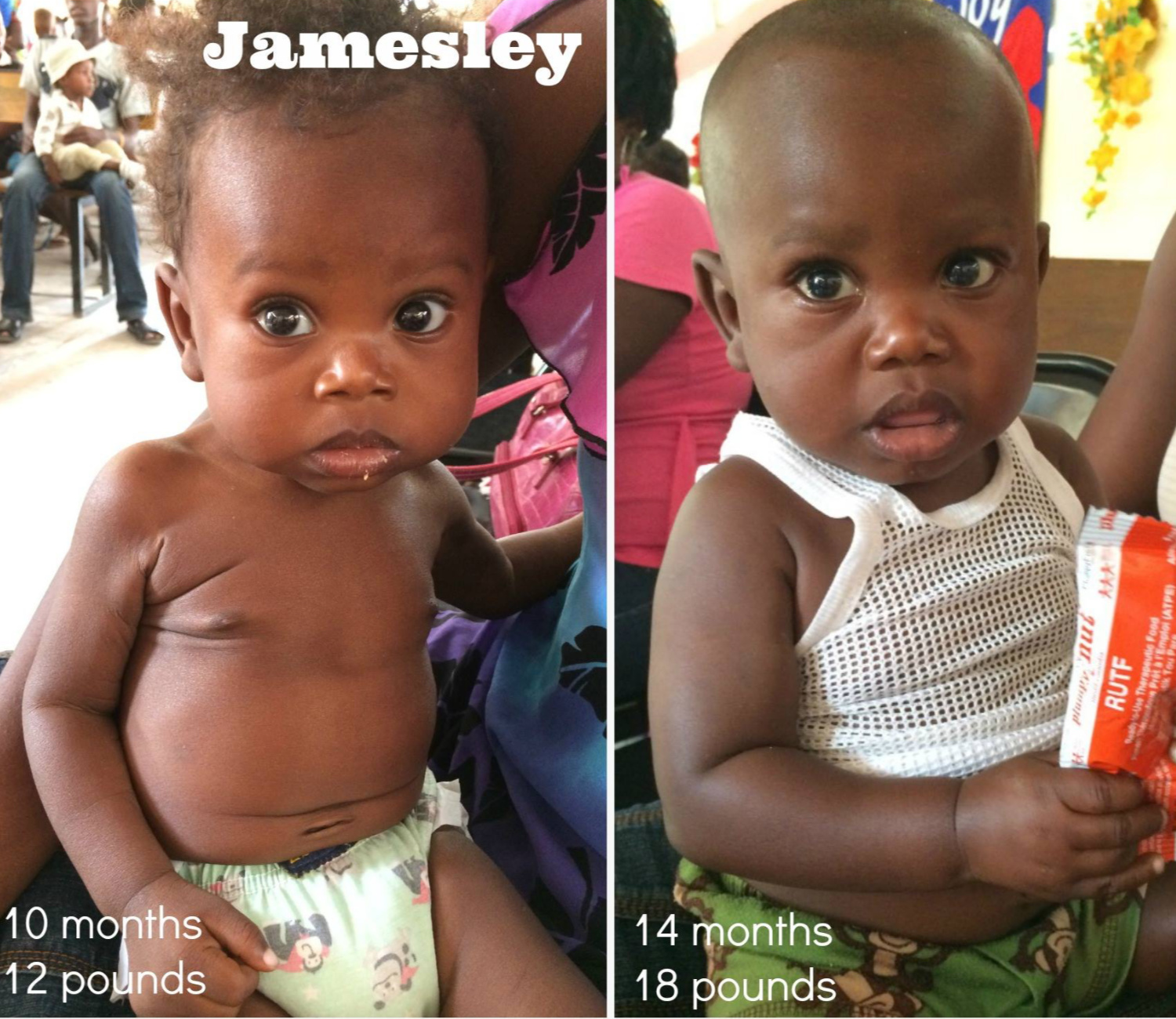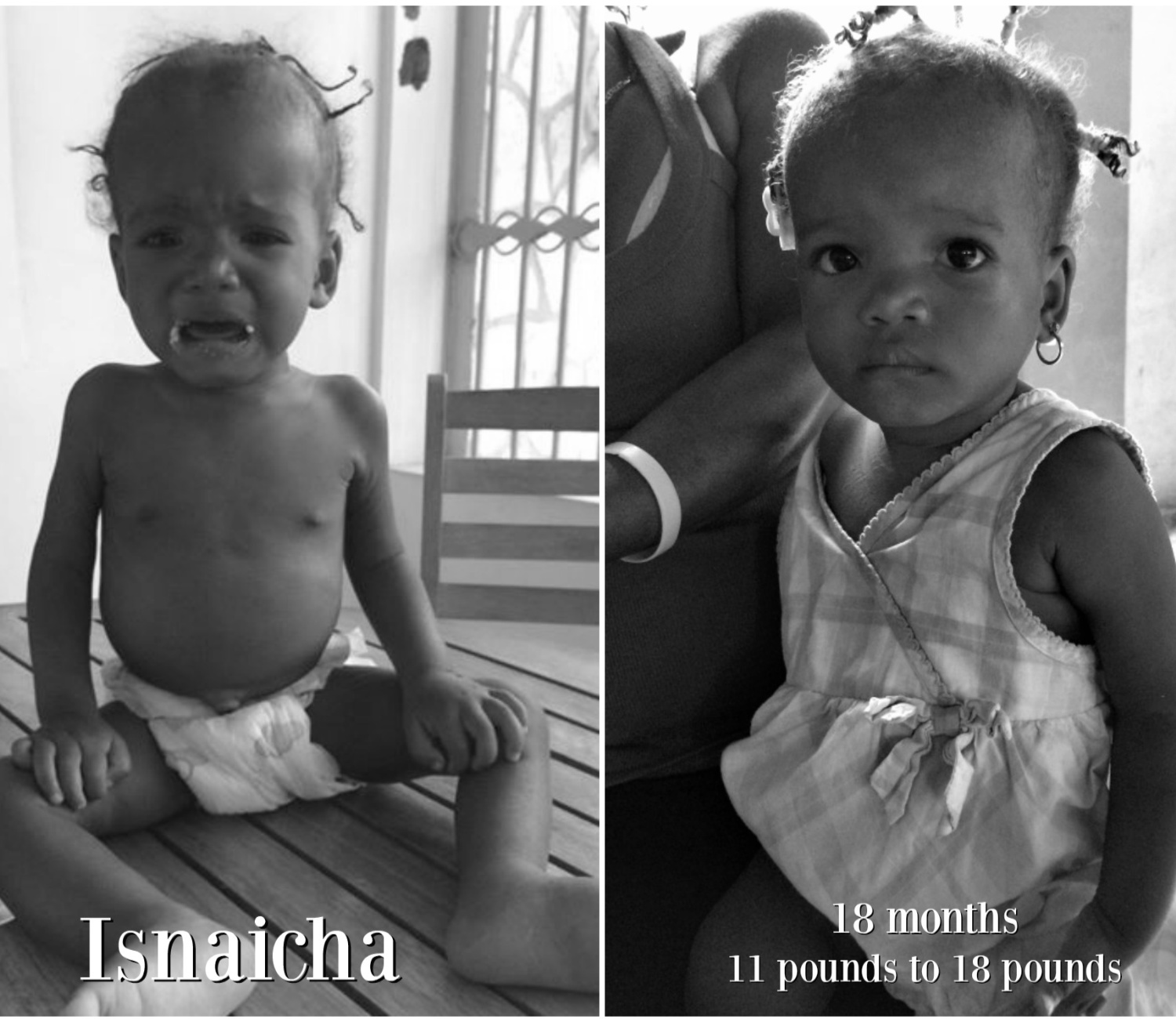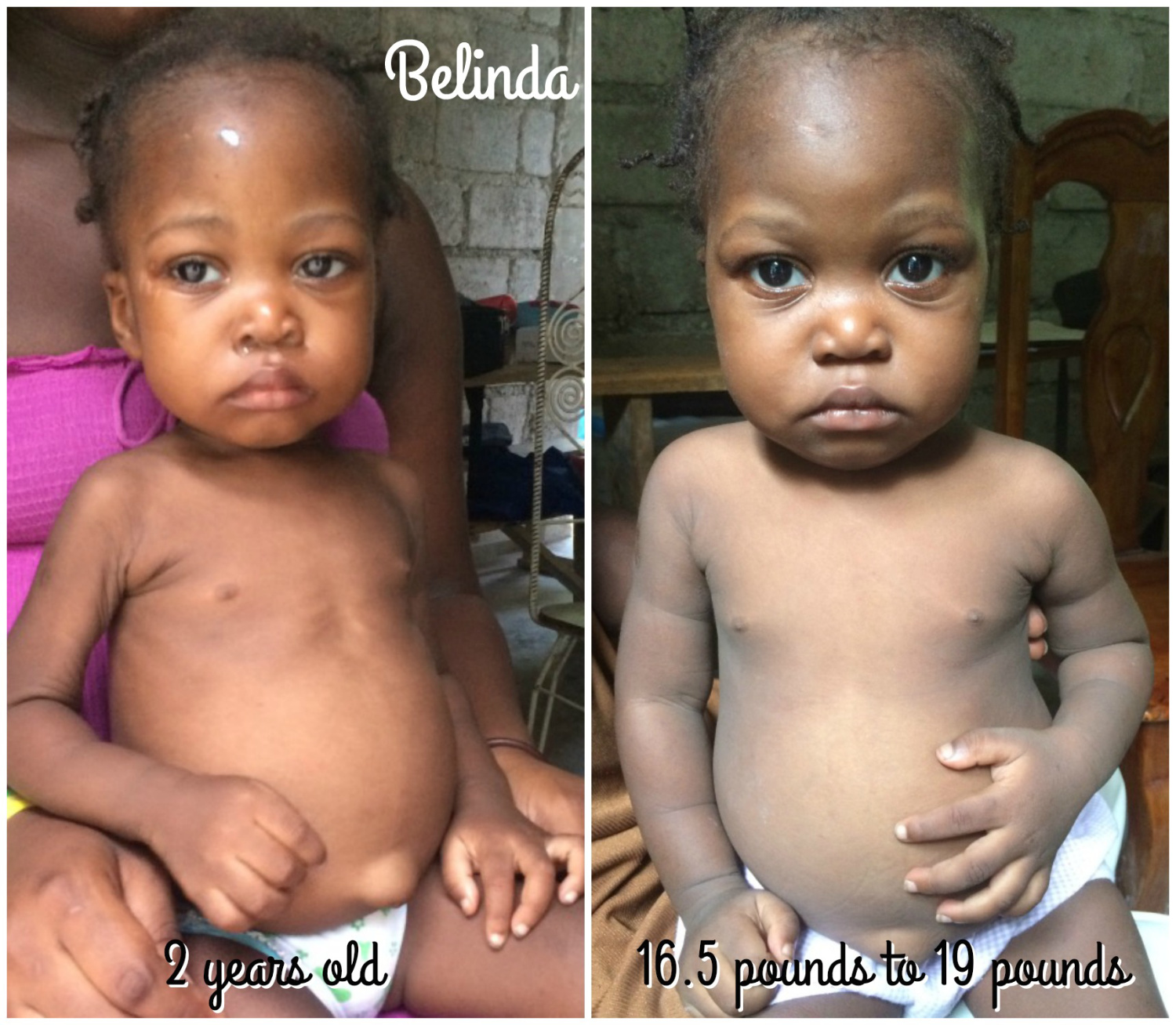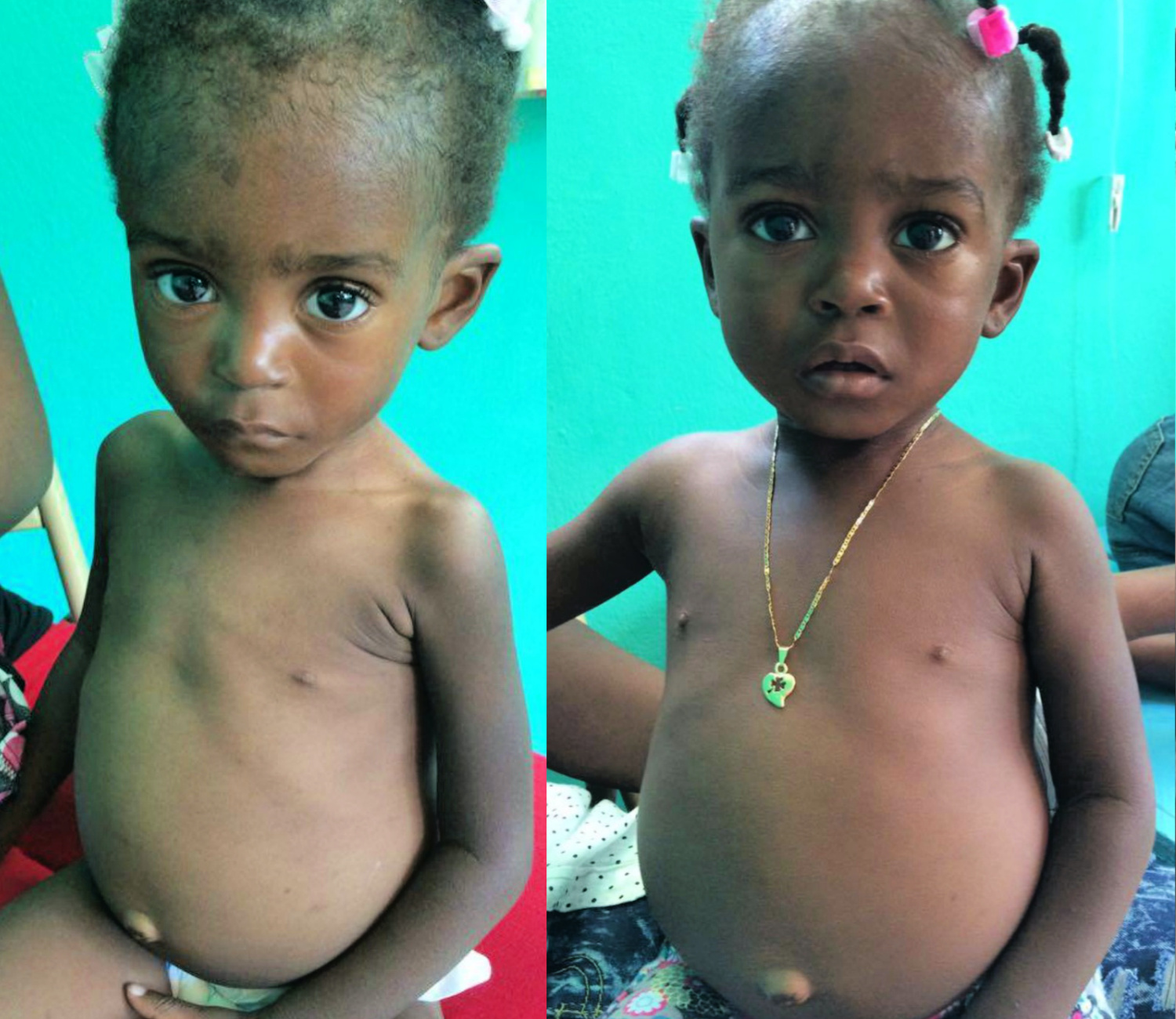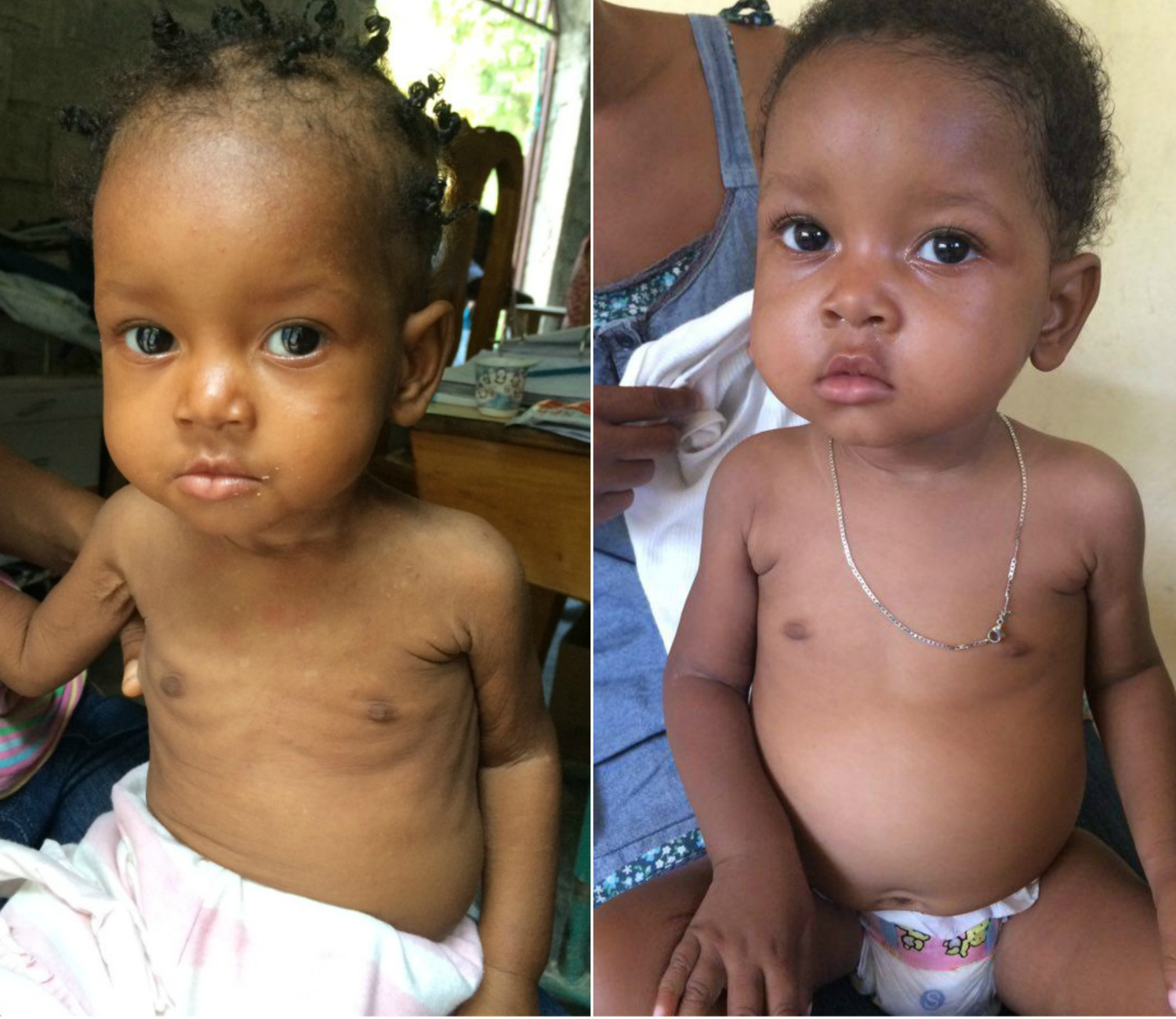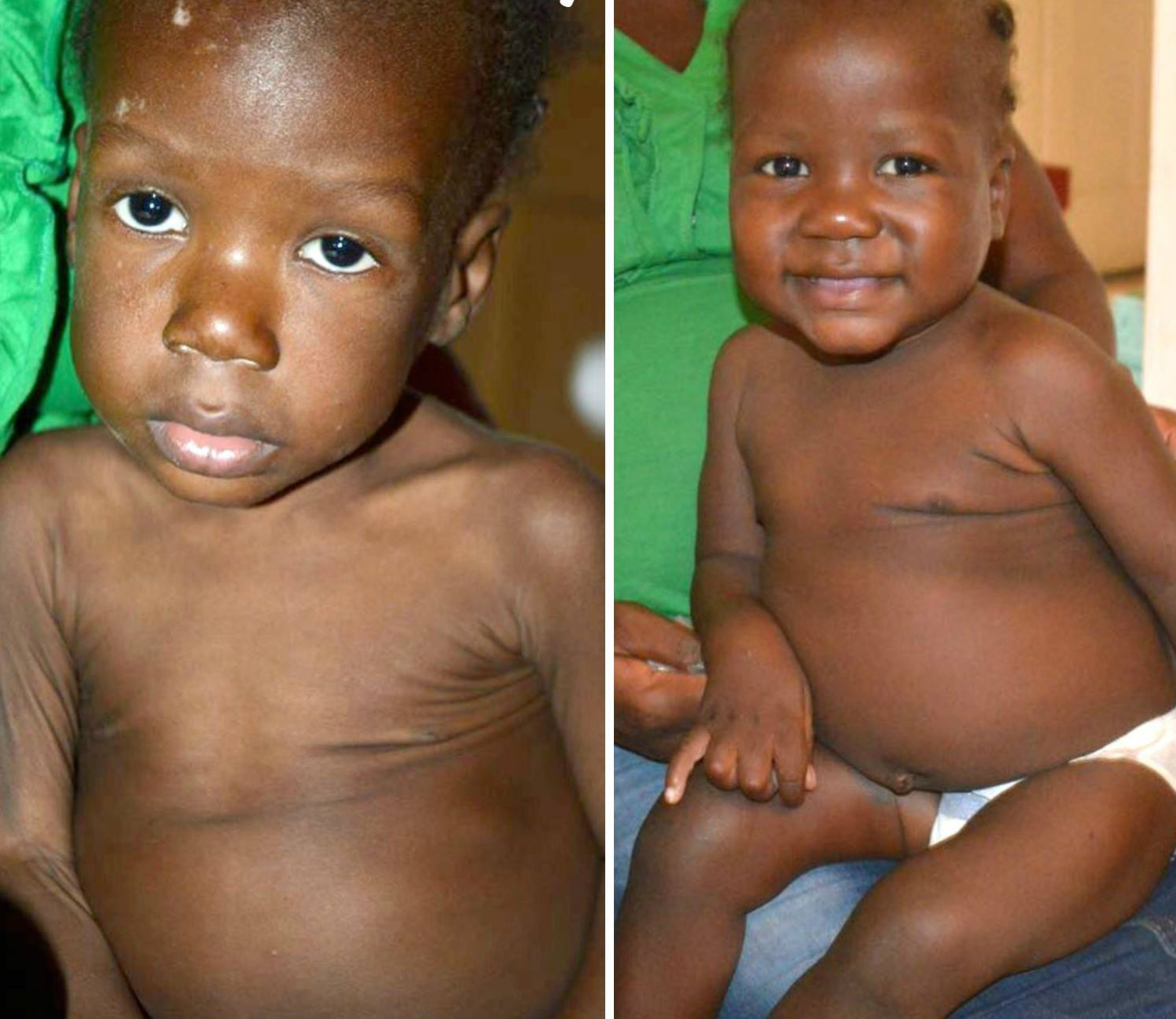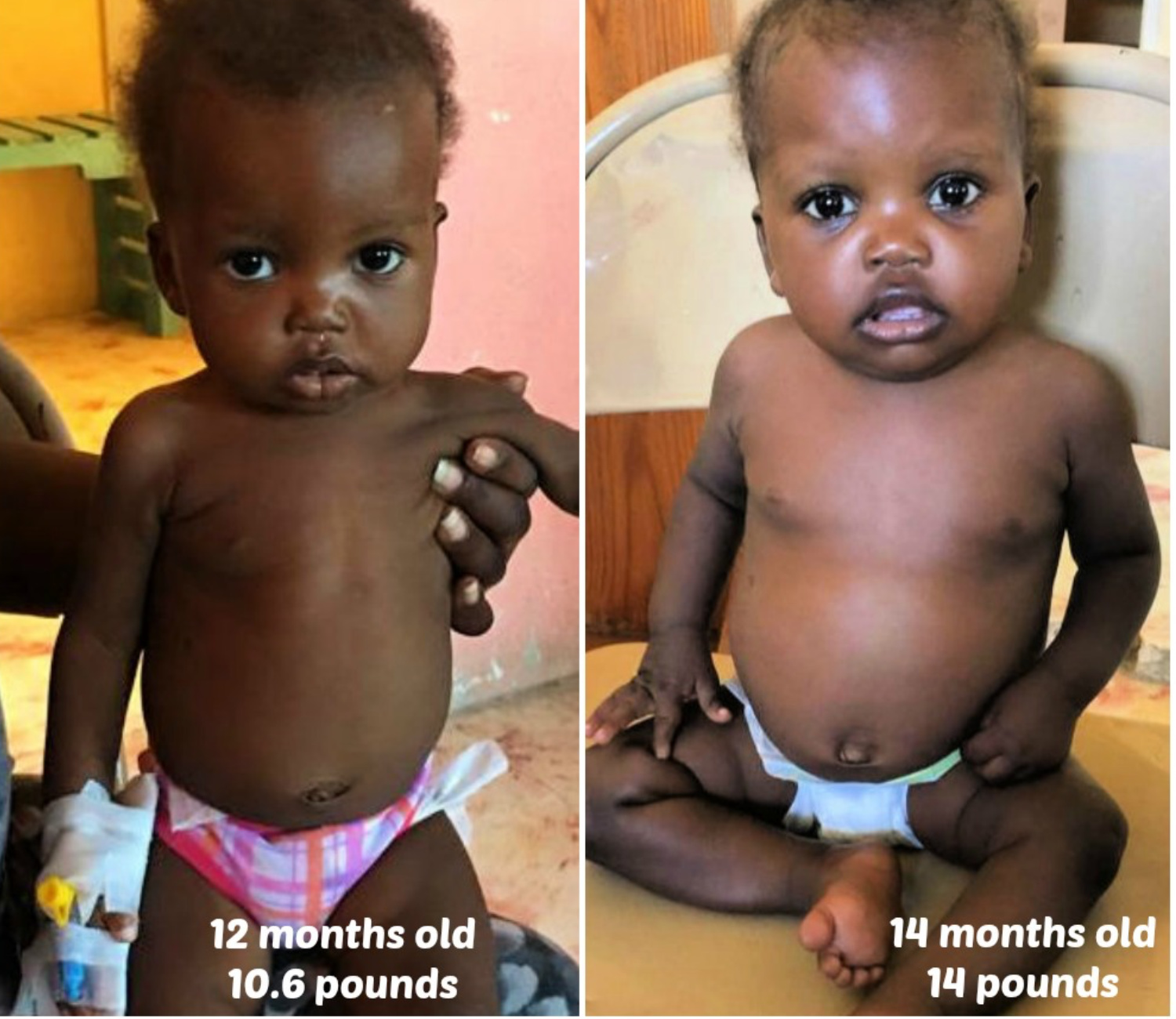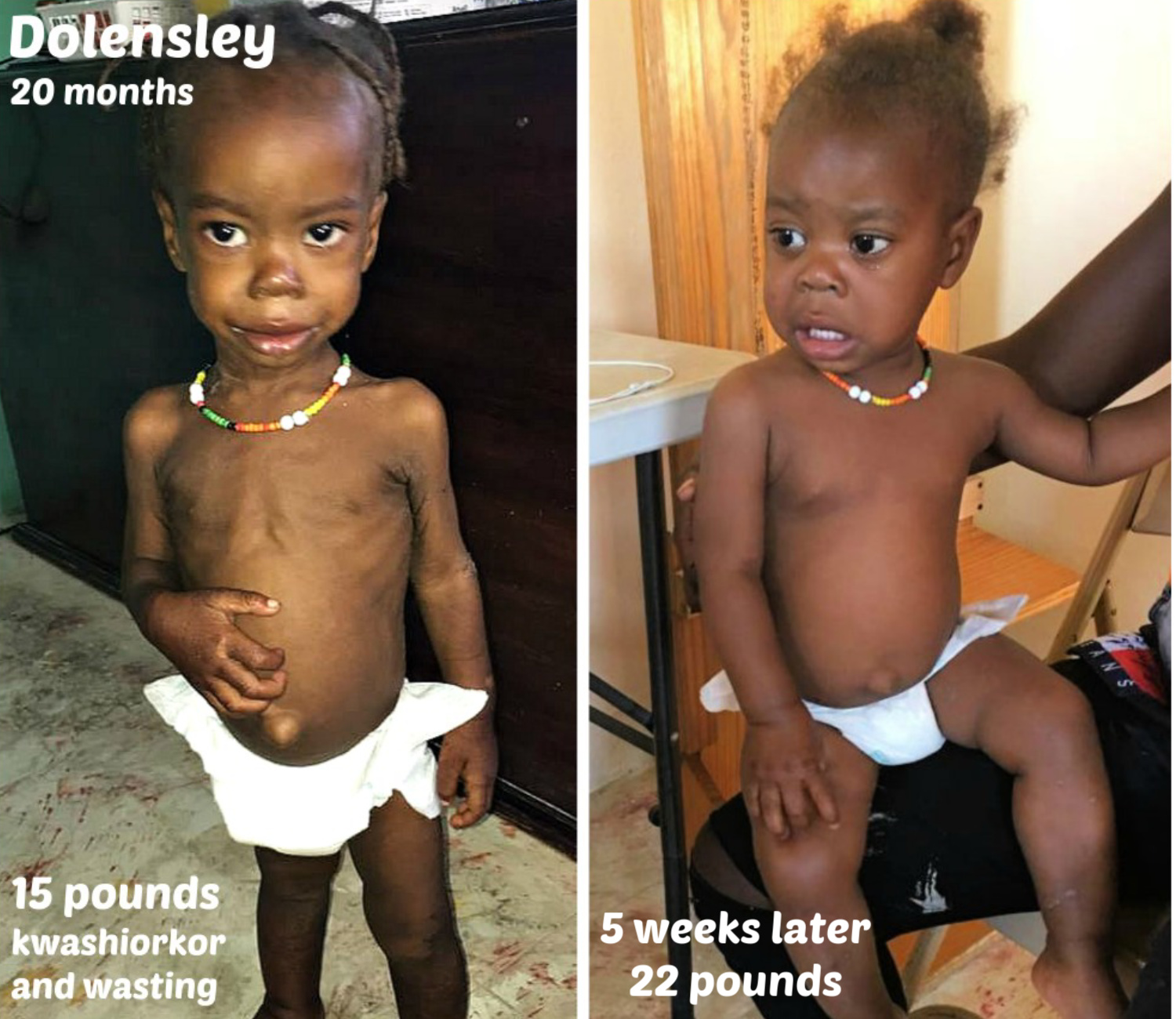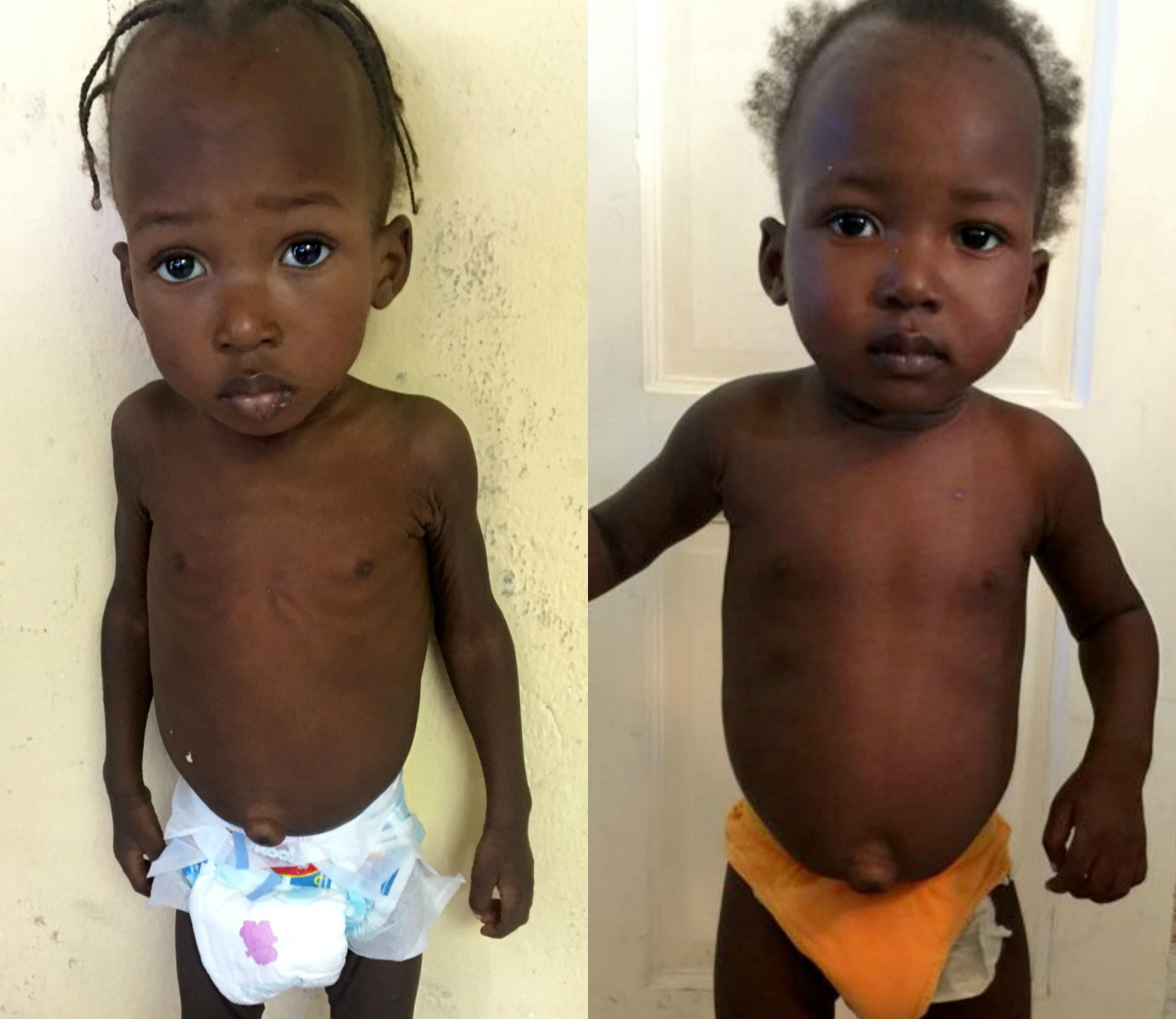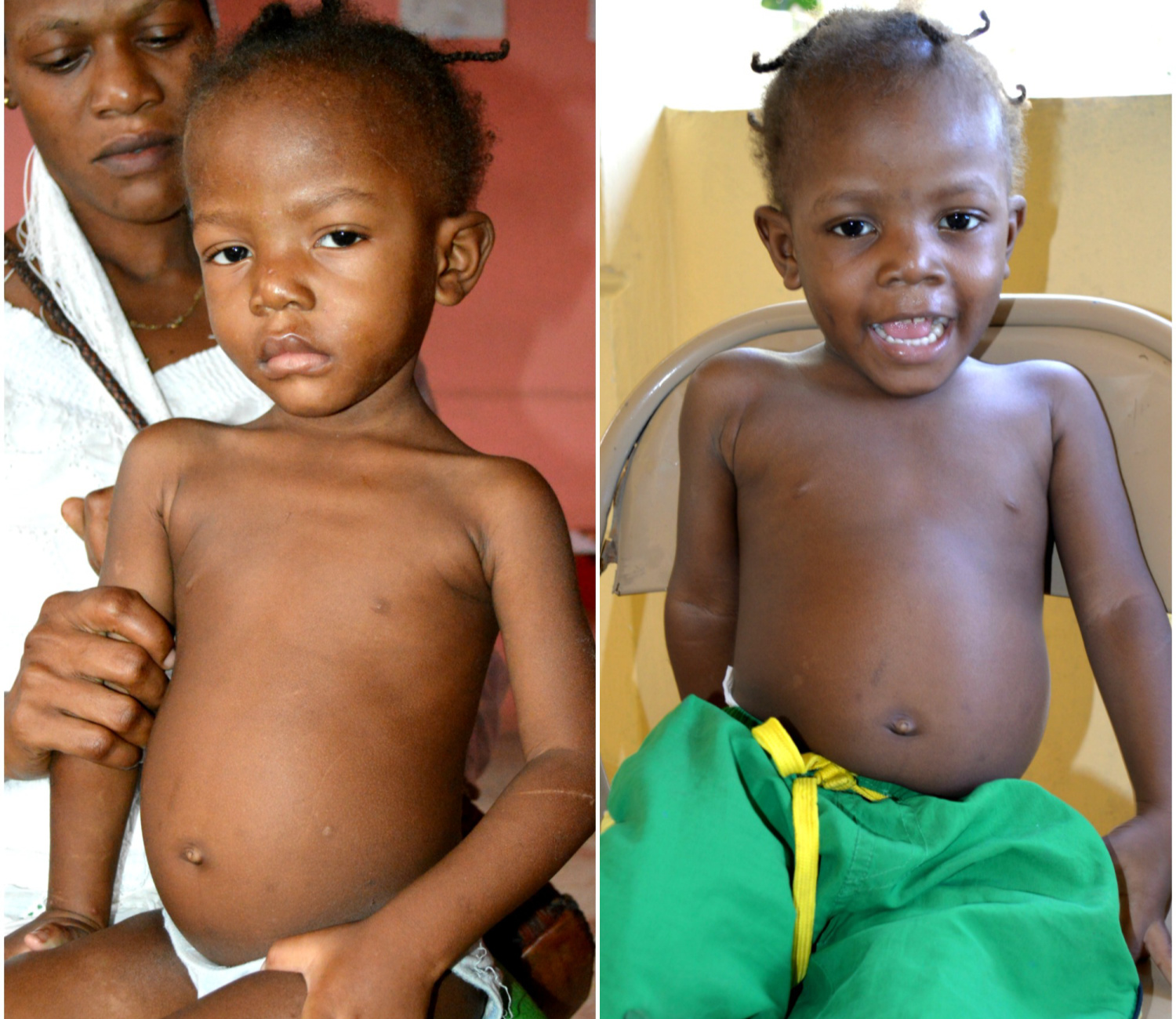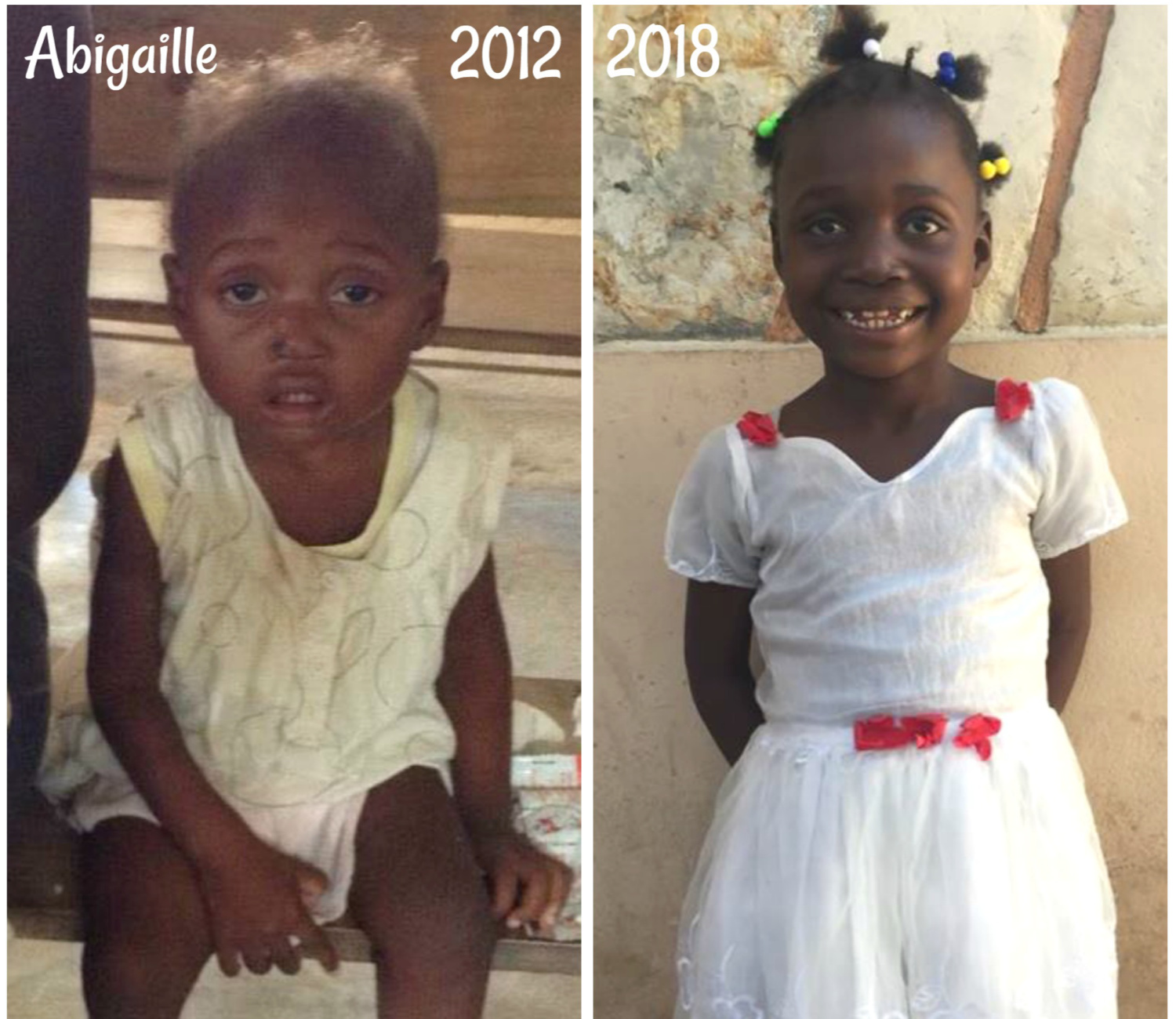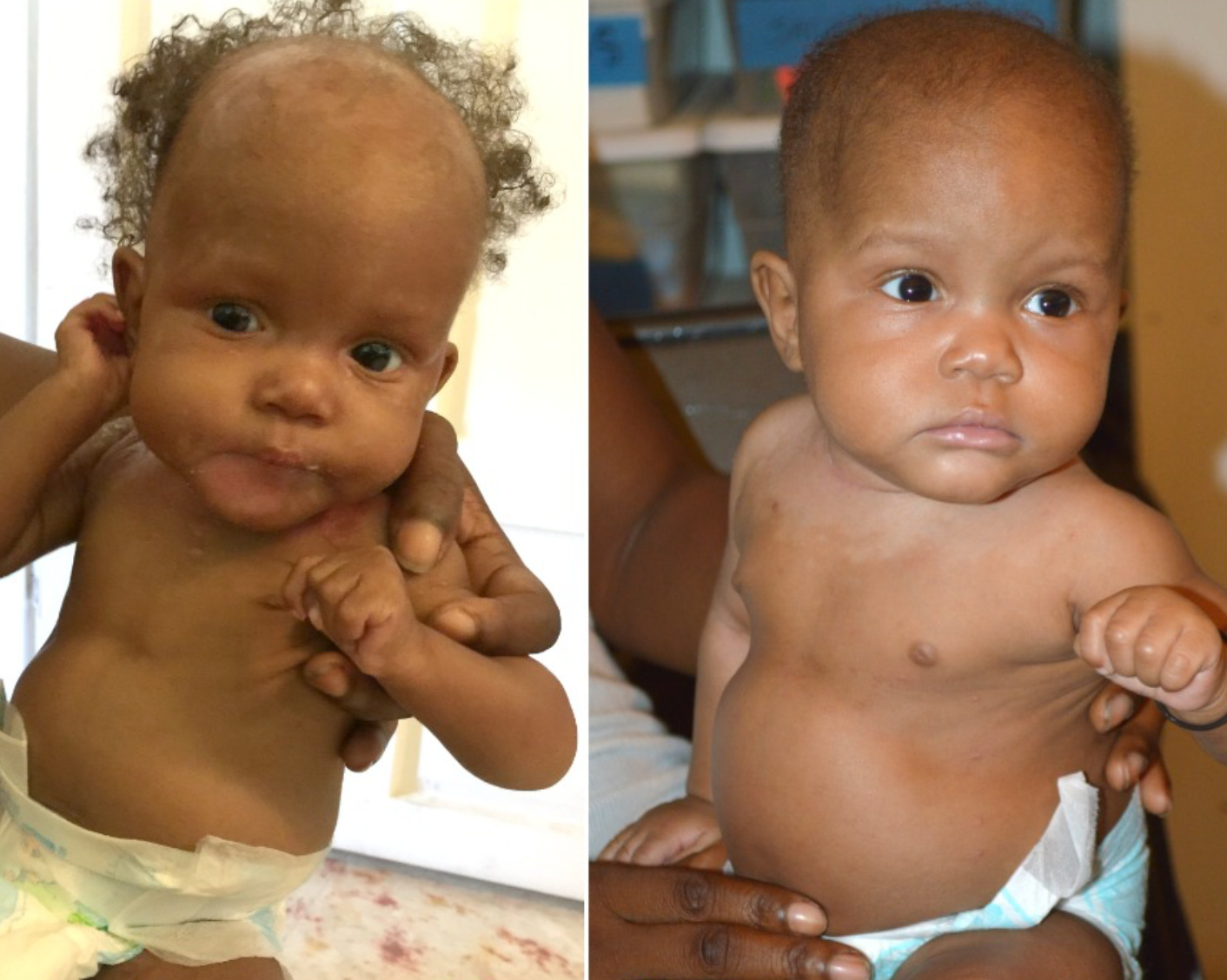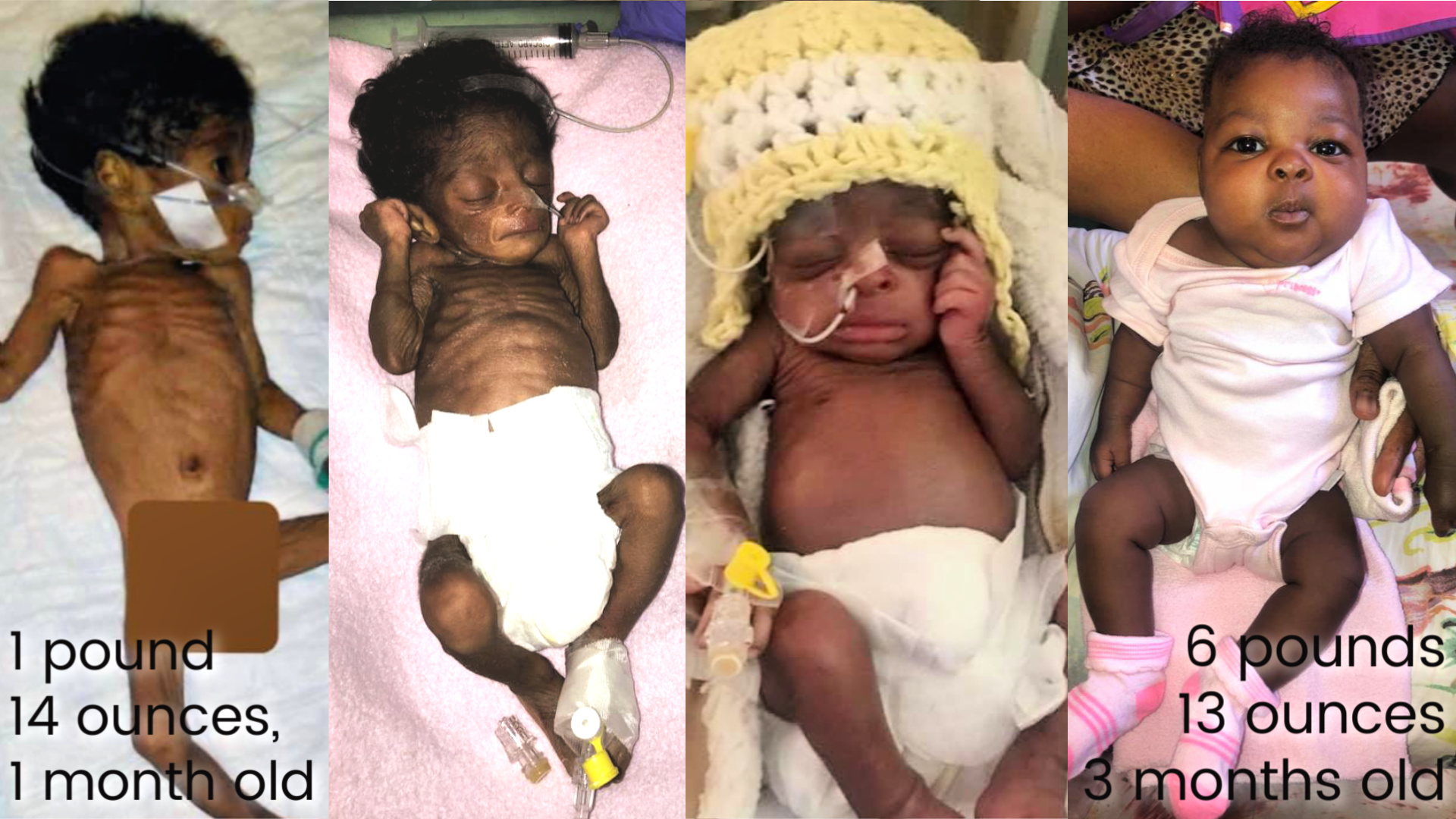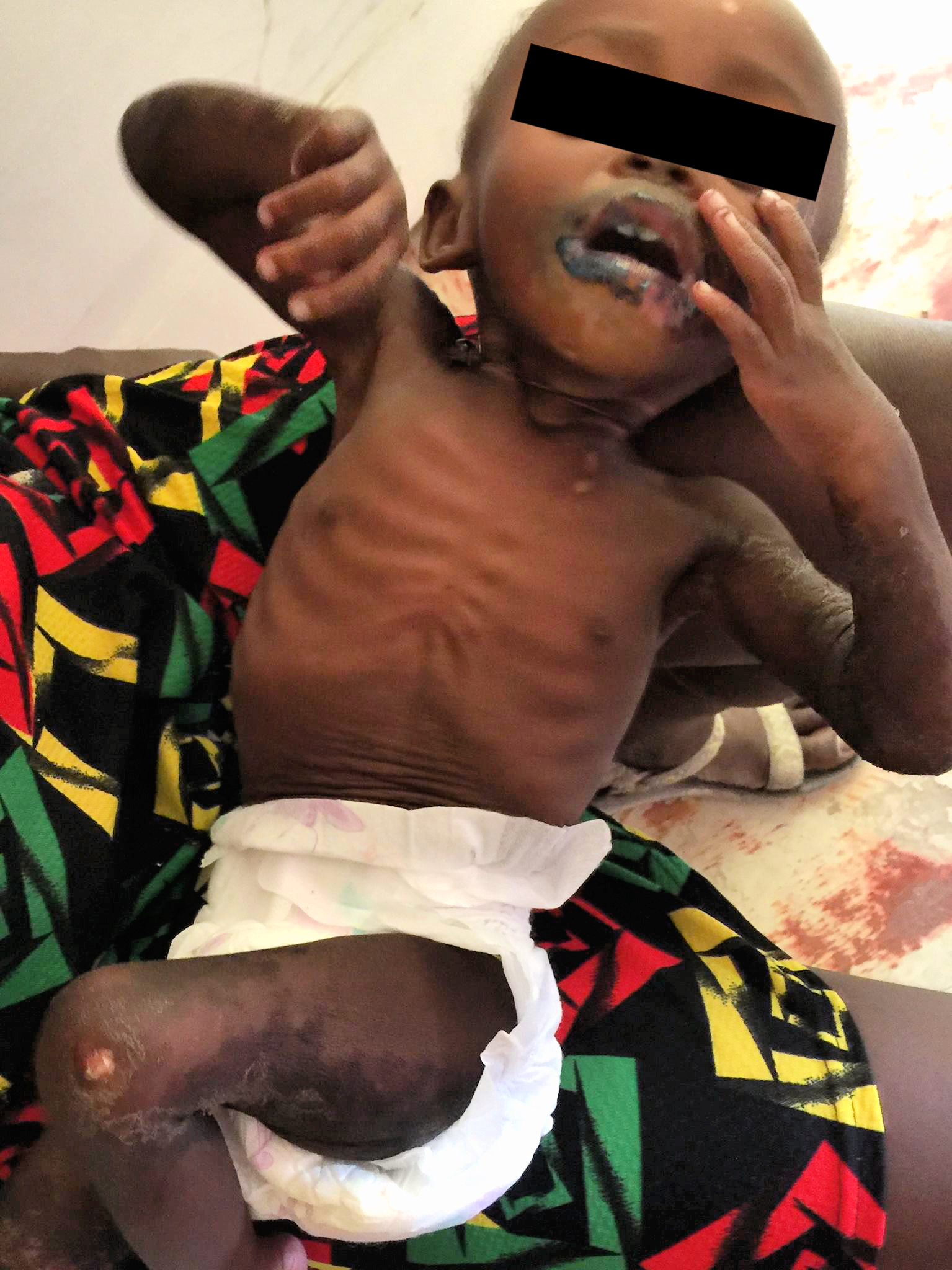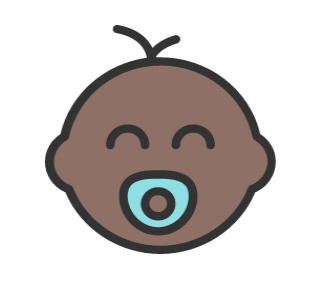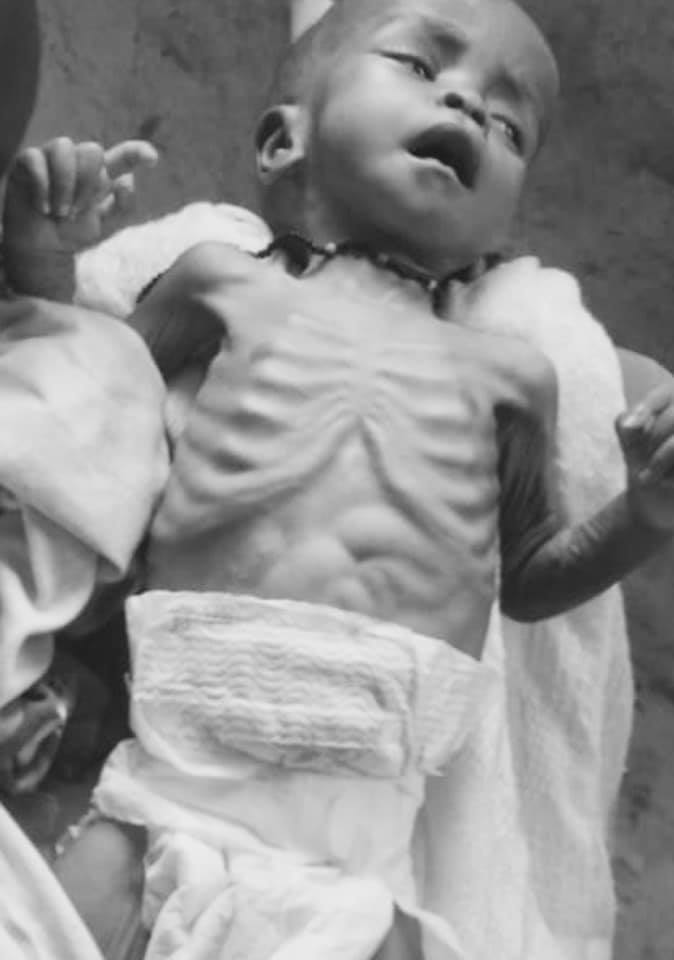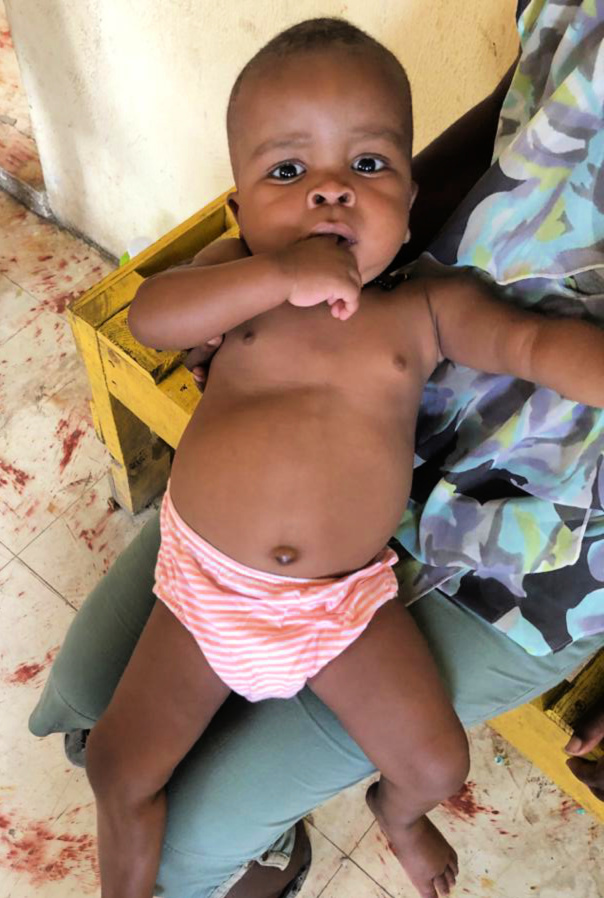1 in 5 children in Haiti are malnourished
The poorest children in Haiti eat a diet consisting mainly of flour- or plantain- based porridge in the morning and white rice with a few beans in the evening. This low-protein, low-vitamin diet is the least expensive for impoverished parents to purchase, but this diet with little protein, fruits, or vegetables nearly all children are undernourished.
According to UNICEF, “Nearly half of all deaths in children under 5 are attributable to undernutrition; undernutrition puts children at greater risk of dying from common infections, increases the frequency and severity of such infections, and delays recovery.” Malnutrition also significantly stunts growth and reduces brain development and the ability to learn.

